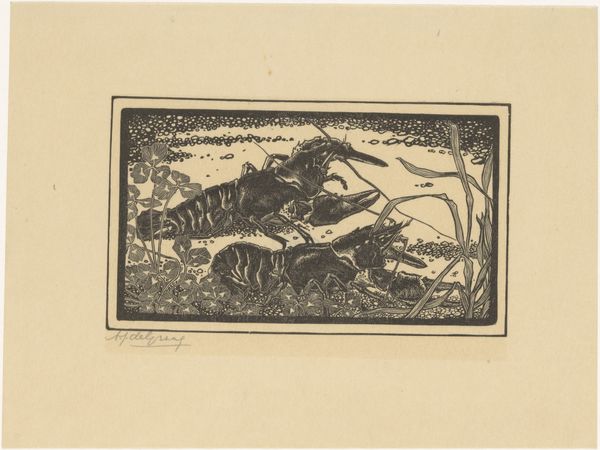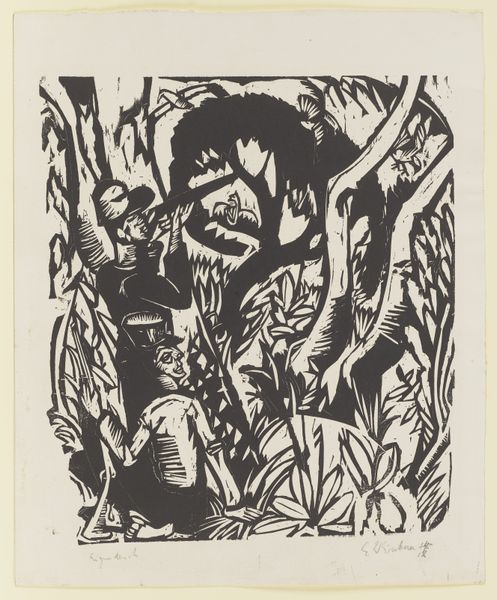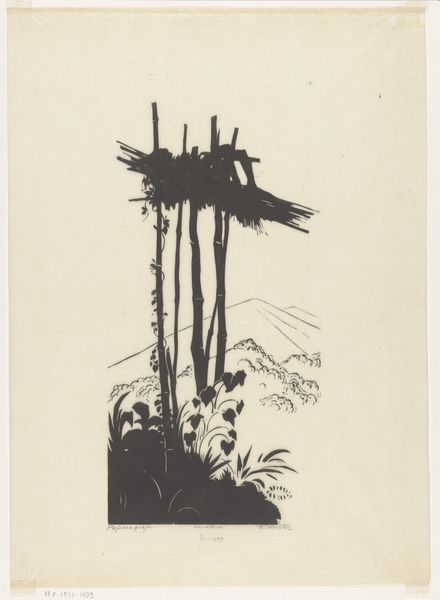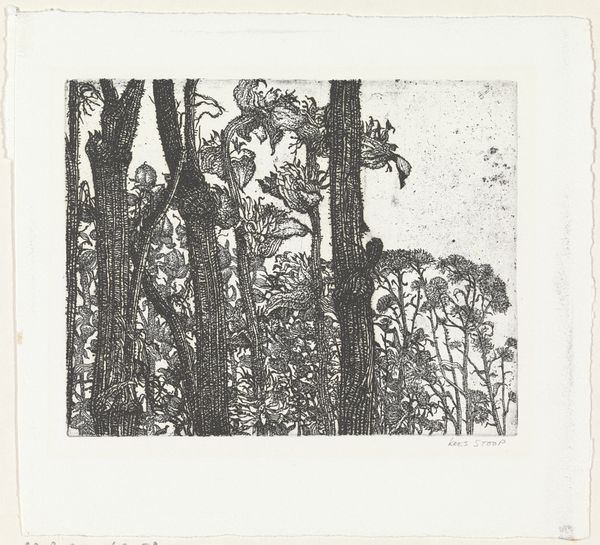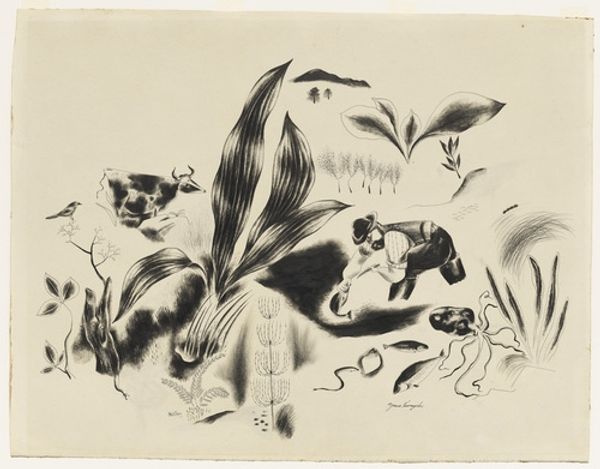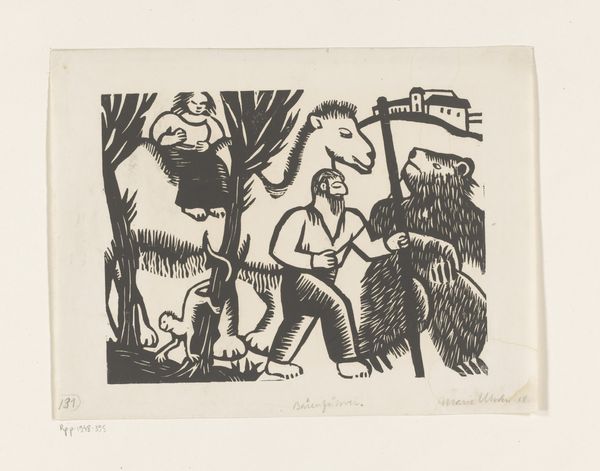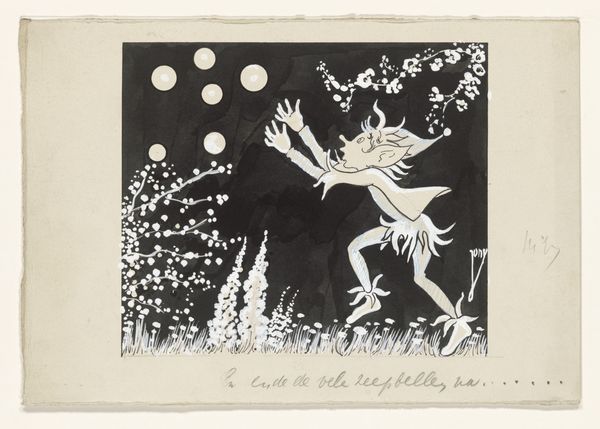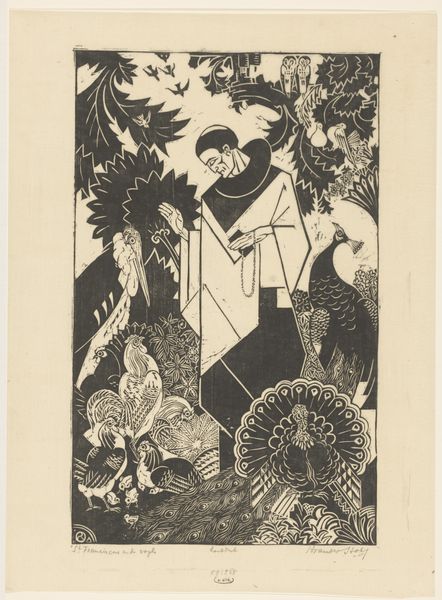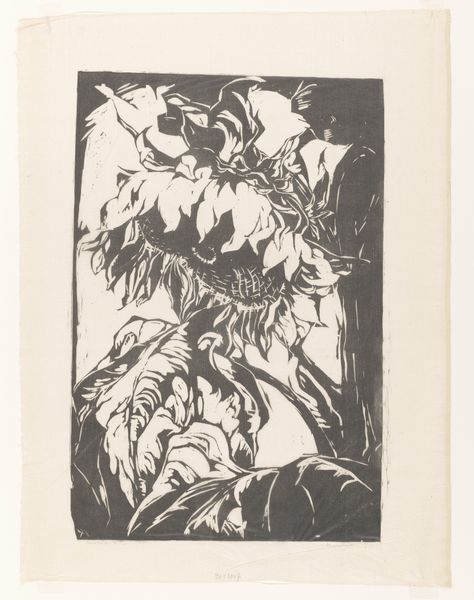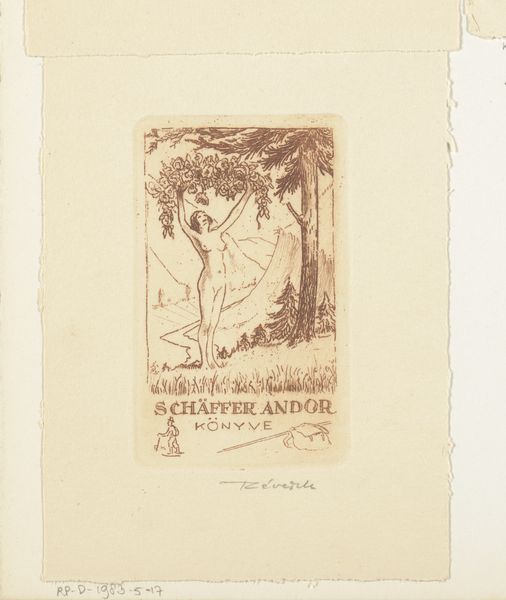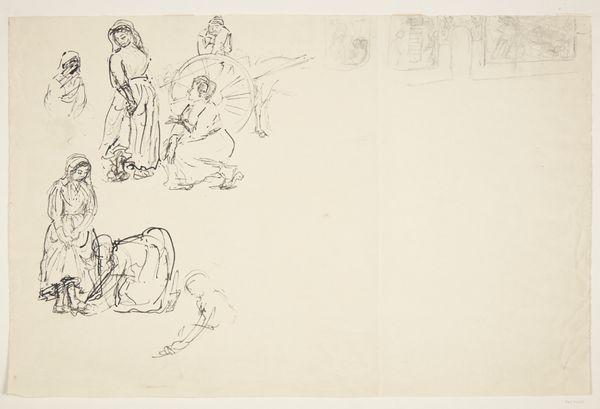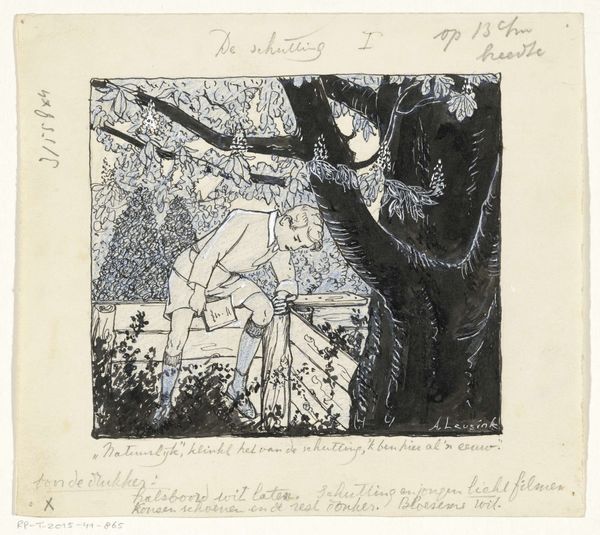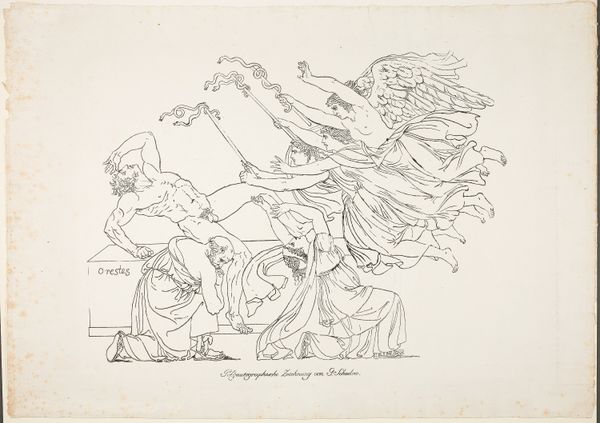
drawing, ink
#
drawing
#
fairy-painting
#
art-nouveau
#
pen illustration
#
figuration
#
ink
#
line
#
watercolour illustration
Dimensions: height 177 mm, width 218 mm
Copyright: Rijks Museum: Open Domain
Curator: Here we have a pen and ink drawing titled "Elf Sitting on a Mushroom," dating roughly from 1875 to 1925. The work also appears to have watercolor illustration techniques at play, if you look closer. Editor: The mood strikes me as melancholic, almost absurd. There’s this elaborate fairy figure juxtaposed with these two... weeping shapes? Is it supposed to be comical or sad? Curator: It's intriguing, isn't it? The fairy-painting genre often depicted fantastical beings in idyllic settings. However, this piece possesses a strong Art Nouveau sensibility and the stark black ink creates a distinctly different tone. We see the clear lines, careful design work on the fairy’s wings and attire; these recall printmaking techniques, suggesting it might have been intended for reproduction. Editor: Absolutely. And I am stuck on the technical craft of creating these dense blacks, the ink, how was it mixed and applied to maintain depth, also creating highlights from these fields of dark material. And these teardrops—what's their material presence on the page? They're like a material representation of feelings, made physically present and even a bit clumsy, like the execution. Curator: That could be the intent. Fairies gained immense popularity through children's literature during the late 19th and early 20th centuries, often serving as moral allegories. Perhaps these figures, with their exaggerated sorrow, are meant to underscore a moral lesson. Or a sign of mourning during world war, given its timeframe? Editor: Potentially. If this was part of a publication or was commissioned artwork, thinking about the context and its immediate market for that piece is key to the work. What would consumers, or an audience at the time be thinking? I still read them as funny, though. They really got it coming with the leaky shoes. Curator: Despite our differing viewpoints, this drawing prompts reflection on societal values embedded within art and illustrations, as it engages popular aesthetics during this period. It demonstrates how art history can unveil subtle social critiques even within seemingly whimsical subject matter. Editor: Agreed. Ultimately, the piece’s enduring value comes from this dialogue between its production processes and the questions it presents about the labor of rendering emotional states in tangible materials.
Comments
No comments
Be the first to comment and join the conversation on the ultimate creative platform.

